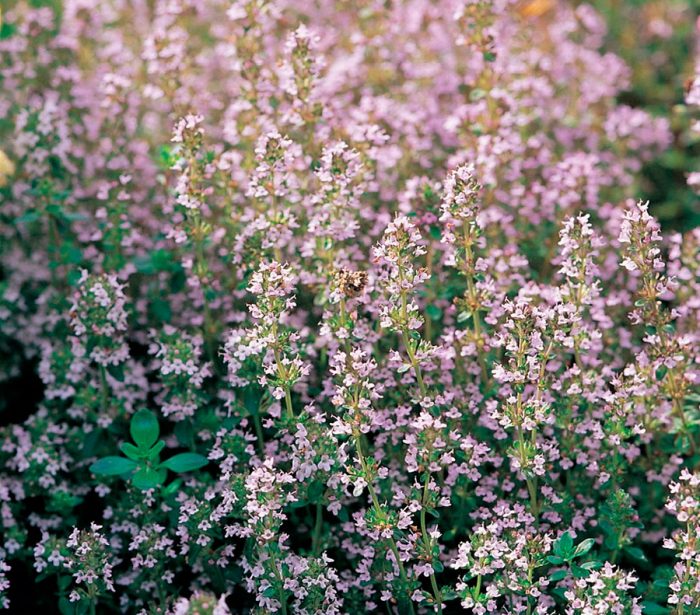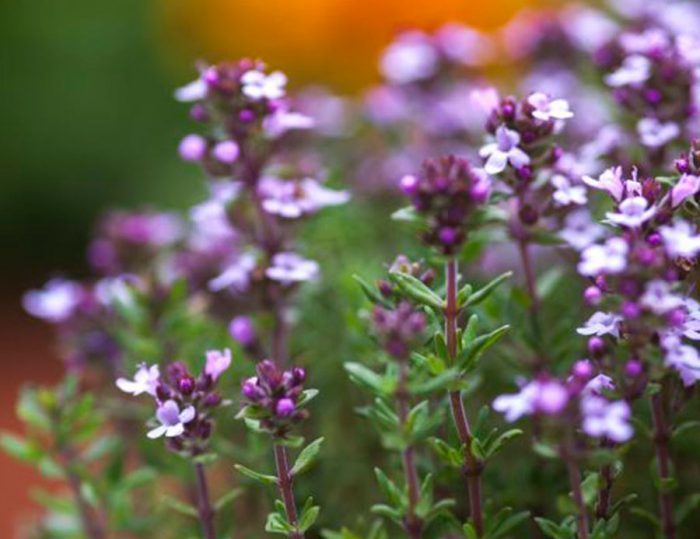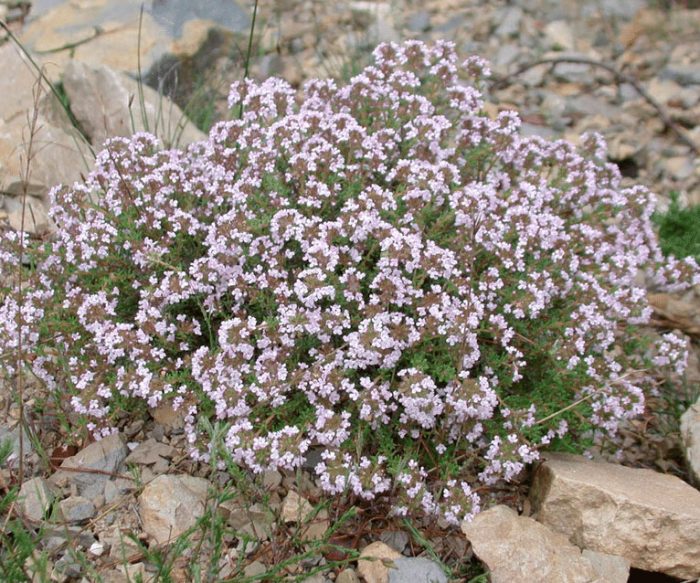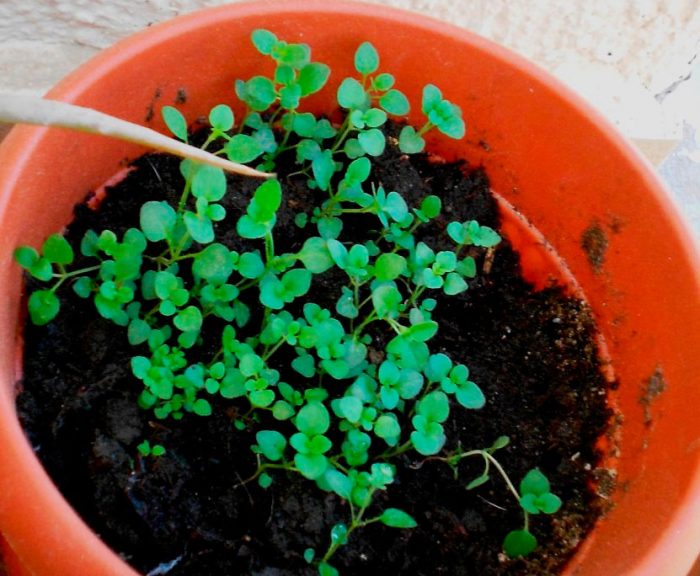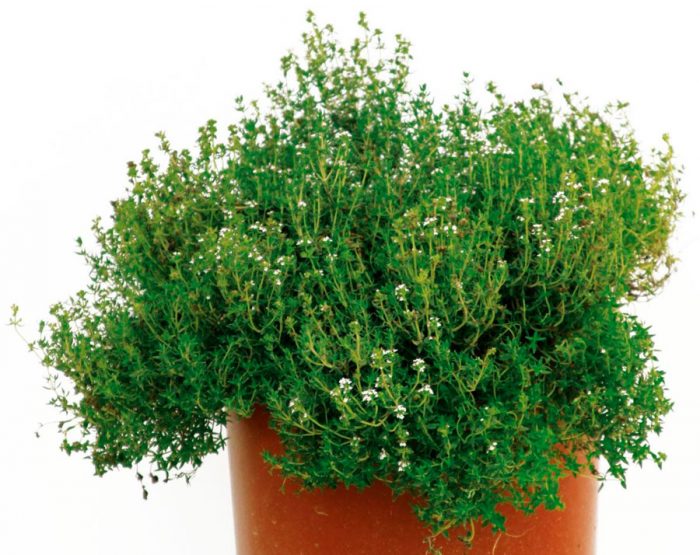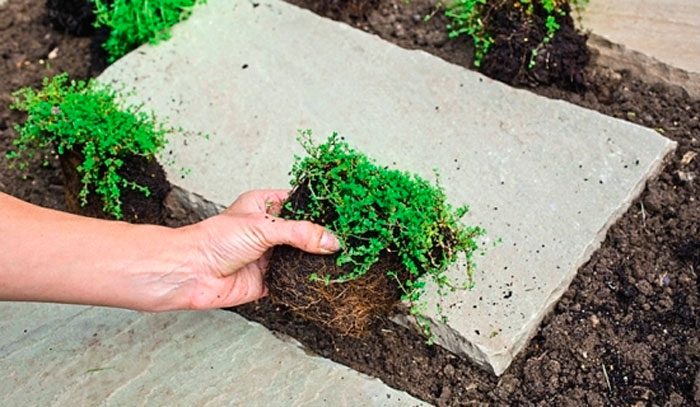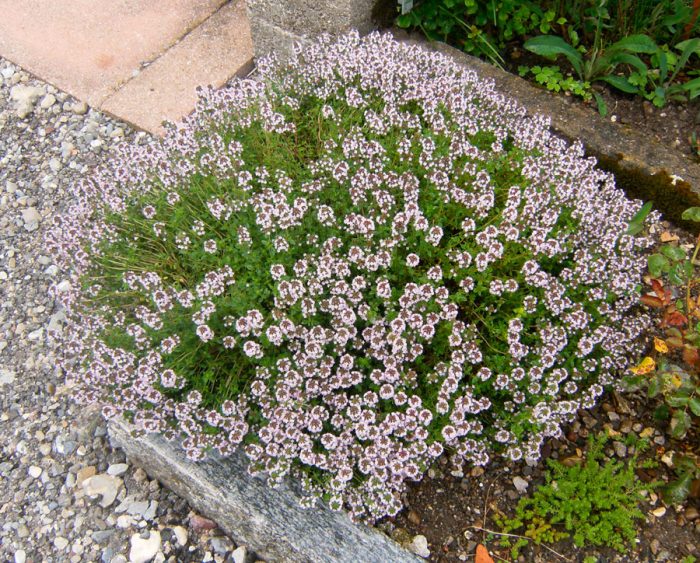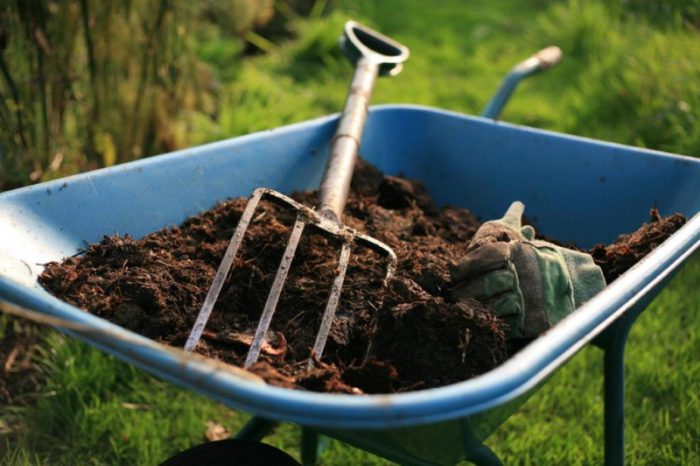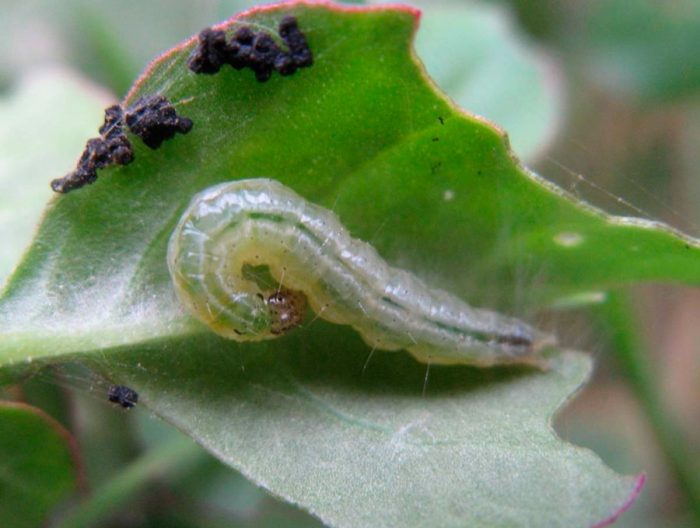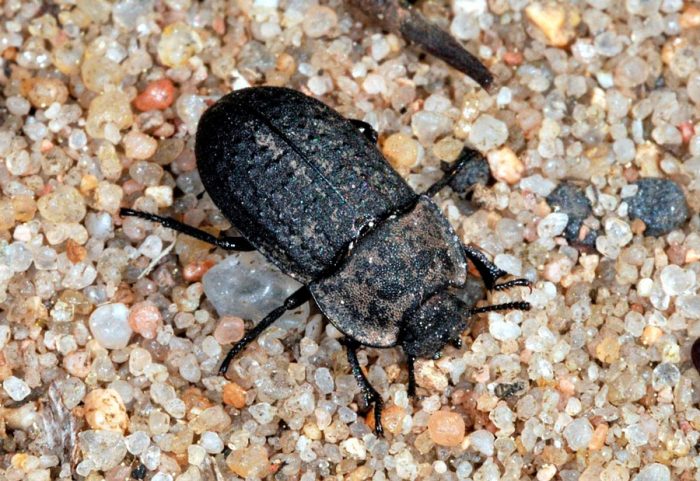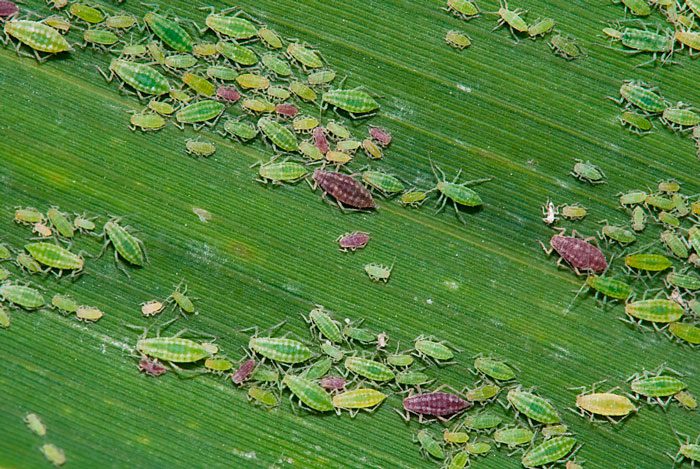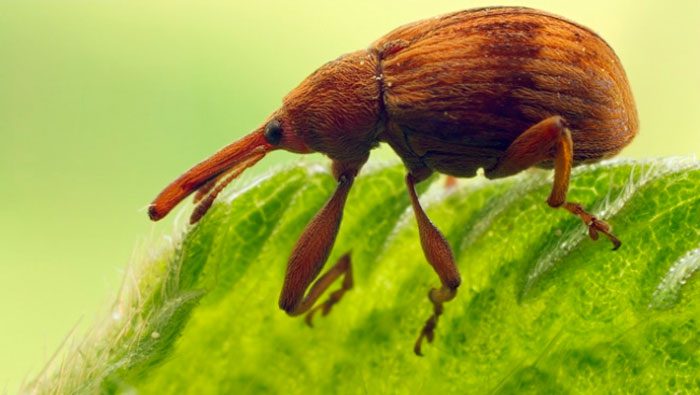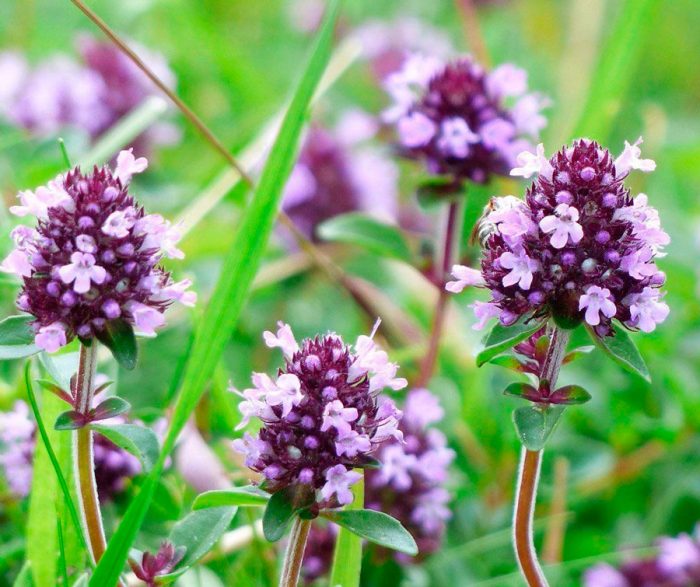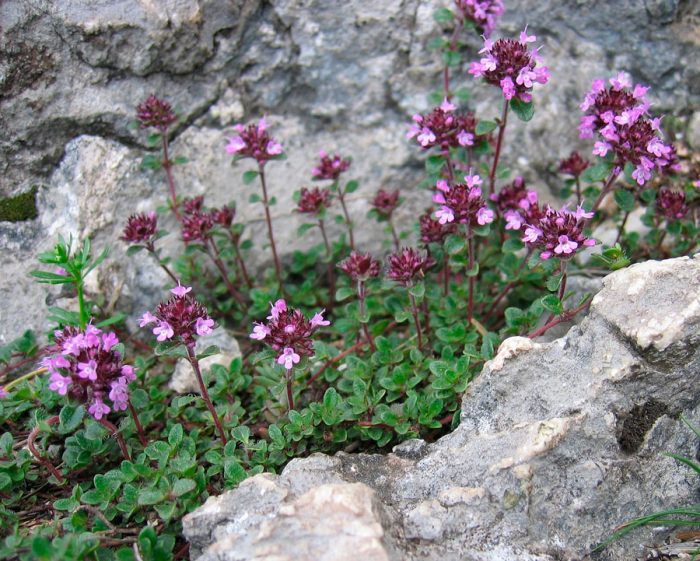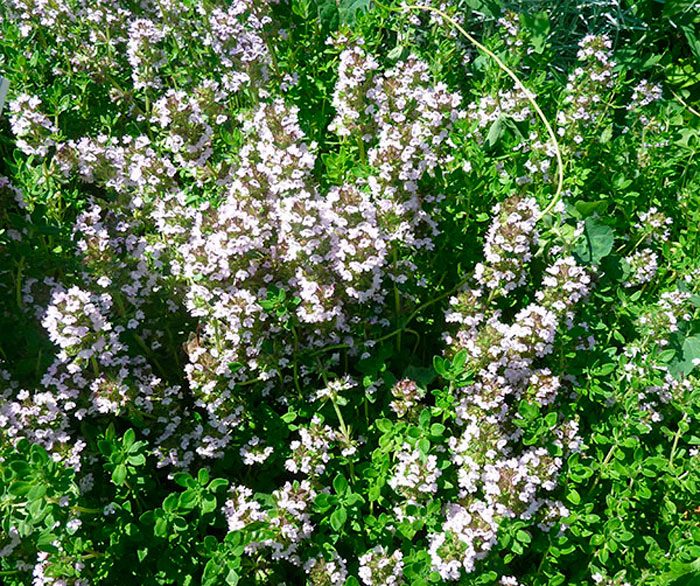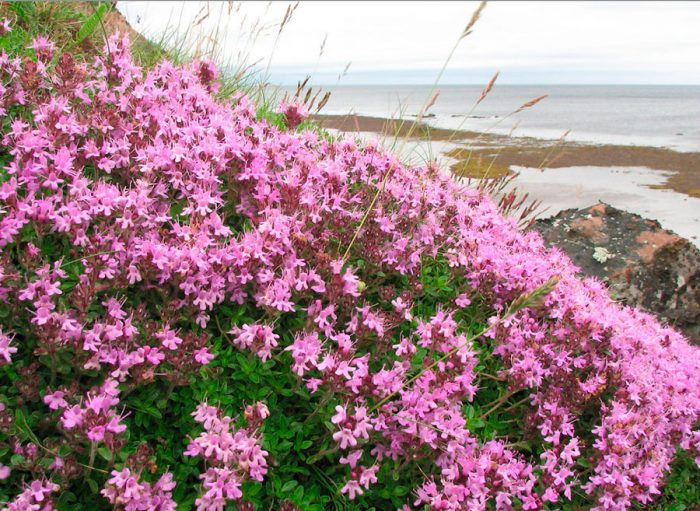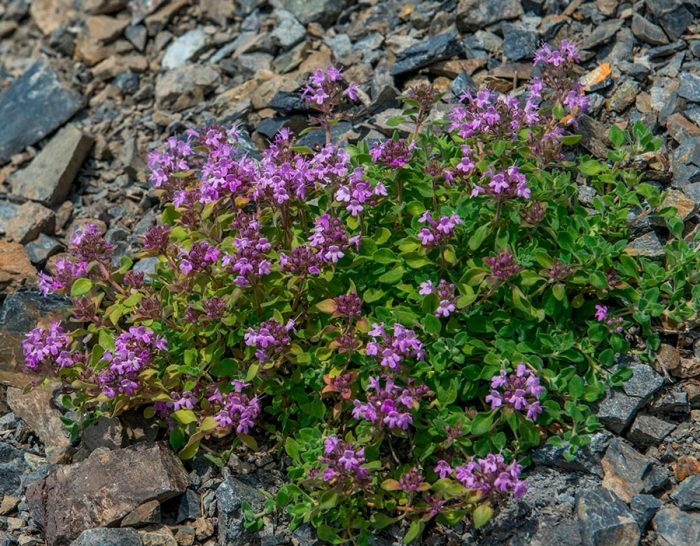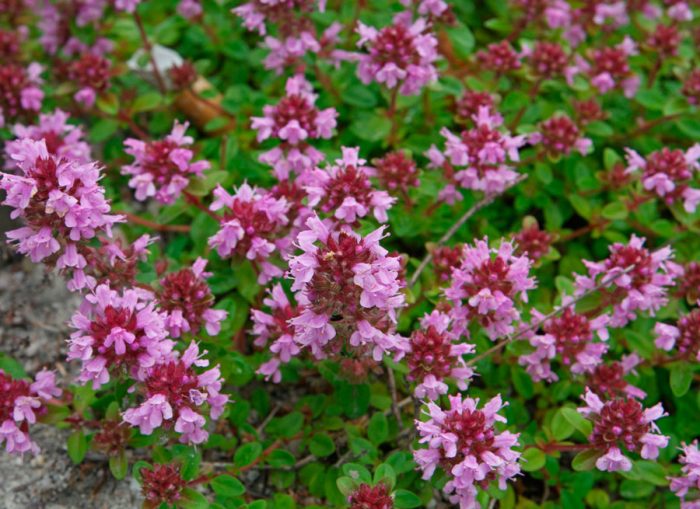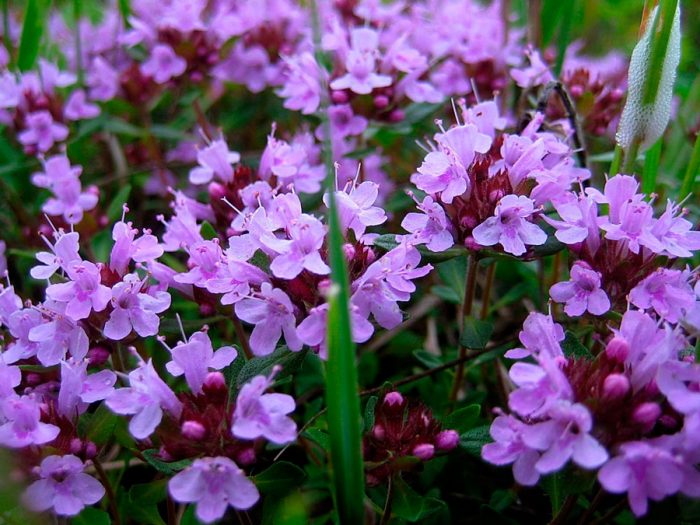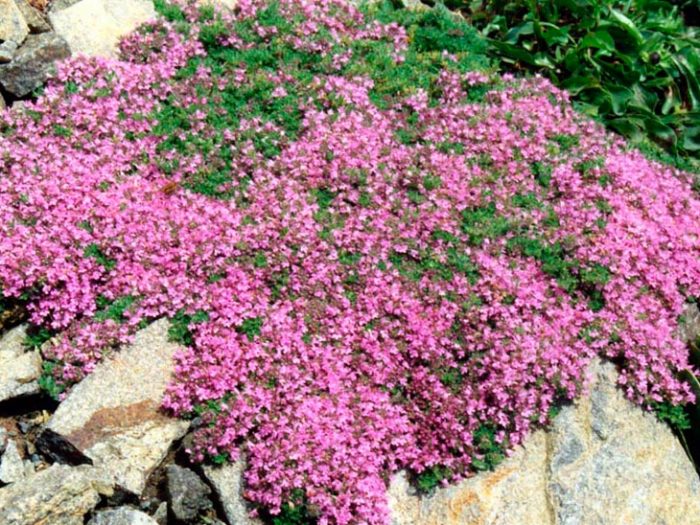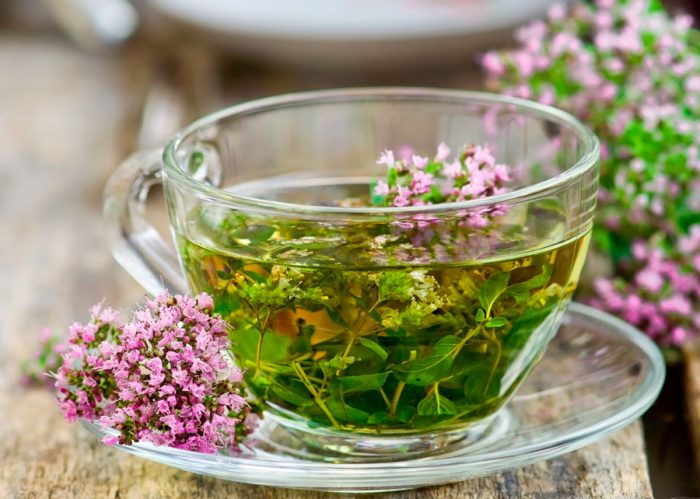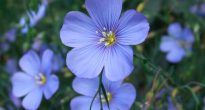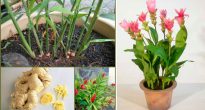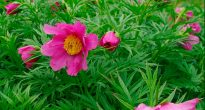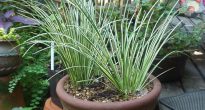A fragrant shrub or thyme shrub (Thymus) is a representative of the largest genus of the Lamb family. The Russian name "thyme" comes from the Greek word "incense", meaning "fragrant substance". In some cases, thyme and thyme are one and the same plant, but only when it comes to creeping thyme. Such a plant has many other names among the people: Bogorodskaya grass, lemon scent, fly-fist, incense, chebarka, verest. The homeland of such a plant is North Africa, the first mentions of it can be found in the works of Dioscorides and Theophrastus. The genus includes several hundred species, in nature they can be found in Greenland and Eurasia. Such a culture is in demand in the perfumery and food industries, as well as in medicine.
Content
- 1 Brief description of cultivation
- 2 Features of thyme
- 3 Planting thyme for seedlings
- 4 Planting thyme outdoors
- 5 Thyme care
- 6 Thyme pests and diseases
- 7 Types and varieties of thyme
- 7.1 Common thyme (Thymus vulgaris), or medicinal thyme, or medicinal thyme
- 7.2 Creeping thyme (Thymus serpyllum)
- 7.3 Early thyme (Thymus praecox)
- 7.4 Lemon thyme (Thymus x citriodorus), or lemon-scented thyme
- 7.5 Subarctic thyme (Thymus subarcticus)
- 7.6 Japanese thyme (Thymus japonicus)
- 7.7 Flea thyme (Thymus pulegioides)
- 7.8 Siberian thyme (Thymus sibiricus)
- 7.9 Dorfler's thyme (Thymus doerfleri)
- 8 Thyme properties: harm and benefit
Brief description of cultivation
- Sowing... Sowing thyme for seedlings is carried out in mid-March. The plant is planted in open soil from mid to late May.
- Bloom... The bushes bloom from June to August. In this case, the first time the bushes bloom in the second year of growth.
- Illumination... The site can be sunny or in partial shade.
- Priming... Nutritious light drained alkaline or neutral.
- Watering... Watering should be done in moderation only when necessary, but when the bushes are blooming, watering should be more frequent. If there is a lot of rain in the summer, then you will not need to water the thyme.
- Fertilizer... It is necessary to feed the bushes only when grown on poor soil, while horny flour should be added to it, and the surface of the garden should be covered with a layer of mulch (rotted compost).
- Pruning... Shortening the stems by 2/3 is carried out at the beginning of the spring period, as well as after the bushes have faded.
- Reproduction... By cuttings, seeds and dividing the bush.
- Harmful insects... Aphids, sandy slugs, meadow moths and weevils.
- Diseases... With increased soil moisture, the bushes are affected by fungal diseases.
Features of thyme
The height of thyme bushes can reach about 0.35 m. Woody stems can be ascending or recumbent, and flowering herbaceous branches are erect or ascending. The woody root is tap root. Depending on the species, the leaf plates of a given plant may differ in size, shape and venation. Most often they have short petioles, and the plates themselves are rigid and leathery, less often they are whole-edged and sessile, while the leaves of the Far Eastern species are serrated. Elongated or capitate inflorescences are located at the tops of the branches, they consist of flowers of pink, white or purple color. The fruit is a box containing 4 spherical nuts with a bitter taste and pleasant smell, they are used as a seasoning called "black thyme". The flowering of such a plant is observed from June to August. Fruits ripen in August – September. This crop is related to the following plants: lavender, oregano, rosemary, hyssop, basil, motherwort, sage, lemon balm and mint. In recent years, such a plant has become very popular among gardeners; today it is grown in the garden almost as often as celery, dill and parsley.
Planting thyme for seedlings
What time to sow for seedlings
Sowing thyme seeds for seedlings is carried out in mid-March. Since the seeds are very small, it is recommended to combine them with river sand in a ratio of 1: 3 before sowing. The container is filled with soil mixture for cacti, while a third of the black soil must be added to it. After that, seeds are evenly distributed on its surface. For sowing, you can also use a substrate consisting of peat and sand (1: 1), while it must be disinfected. It is not necessary to bury the seed in the soil mixture, it is only covered with a thin layer of sand from above. Then the crops are carefully watered from a finely dispersed sprayer, and the container is covered with glass on top and removed to a well-lit and warm place.
Seedling growing rules
Seedlings must be grown indoors for at least 8 weeks. Plants are best planted in open soil at the age of 70 days. After the seedlings appear, they are placed in a cooler place, and the glass is removed. Watering is carried out with a sprayer immediately after the top layer of the substrate dries out a little. The room where the seedlings are located should be well ventilated, but they must be protected from drafts.
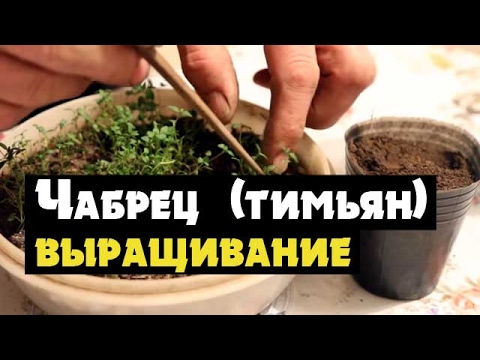

Watch this video on YouTube
Growing on a windowsill
Thyme can be grown indoors. To do this, you need a pot that is no more than 15 centimeters across; at its bottom you need to make a drainage layer, the thickness of which should be from 20 to 30 mm. Drainage from above can be covered with a layer of soil mixture (see above for composition). The soil mixture must be moistened, and several seeds must be evenly distributed over its surface, and the top must be covered with a half-centimeter layer of substrate, which is then moistened with a spray bottle. The container is covered with a film or glass, then it is removed to a south-facing window, while the crops are protected from direct sunlight. The seed is characterized by good germination. After the seedlings appear, the shelter must be removed. Watering should be moderate, it is carried out after the top layer of the substrate has dried. After 8 weeks, all weak seedlings should be removed, only the most developed should remain.To get fragrant and fresh greens as long as possible, you should cut them often enough, while trying to prevent the bushes from blooming.
Planting thyme outdoors
What time to plant
Planting thyme seedlings in open soil should be carried out from mid to late May. The area suitable for planting should be well lit. It can be grown in a shaded area, but such bushes do not develop well and stretch out strongly. The soil should be well-drained, nutritious, light, alkaline or neutral. If grown in clay and damp soil, the bushes may rot and therefore may need to be well drained.
The preparation of the site for planting should be done in the autumn. To begin with, you need to remove all plant residues from it, then dig it up, while rotted manure or compost, as well as potassium-phosphorus fertilizer, should be added to the soil. In spring, before planting, the site must be loosened, and the soil is spilled with a solution of urea (20 grams per 1 liter of water). When planting bushes between them, a distance of 20 to 25 centimeters should be observed, while the row spacing should be from 0.4 to 0.5 m.
Thyme care
So that no stagnation of water is observed in the root system of the bushes, and no crust appears on the surface of the soil, it must be regularly loosened. It is necessary to weed the bed in a timely manner, pulling out only the weeds that have appeared. To reduce the number of weeding and loosening, the surface of the site must be covered with a layer of mulch (compost). You also need to regularly prune the bushes, this is done in early spring or after the thyme has faded. It is necessary to shorten the stems by 2/3 before they begin to lignify. The pruning of bushes must be carried out in order for them to become compact and denser.
How to water
Such a culture reacts extremely negatively to stagnation of fluid in the roots, but it is drought-resistant. Because of this, watering thyme should only be done when absolutely necessary. When the bushes bloom and young stems begin to grow, they should be watered a little more often. If it rains regularly in the summer, then there is no need to water the bushes at all.
Fertilizer
Thyme does not particularly need additional feeding, especially if all the necessary fertilizers were introduced into the soil before planting the thyme. Only if the soil in the bed is very poor, the plants will need additional feeding, for this the surface of the bed should be covered with rotted compost or horn flour can be added to it.
What can be grown after thyme
Since thyme does not need a large amount of nutrients and after it the soil does not deplete, as, for example, after potatoes, cabbage or celery, after it any plants can be cultivated on the site, however, they should not be members of the Lamiaceae family.
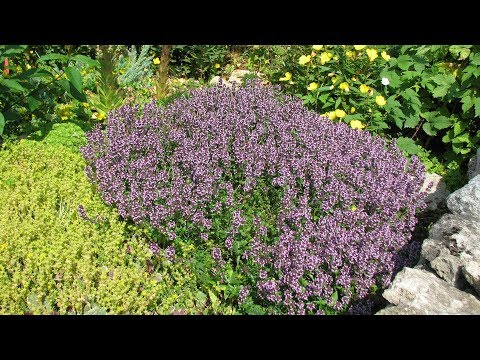

Watch this video on YouTube
Thyme pests and diseases
Thyme pests
Such a culture is highly resistant to various diseases and harmful insects, since it contains essential oil. However, if you do not follow the agrotechnical rules of this culture, then sandy slugs, meadow moths, aphids and weevils can settle on the bushes.
Meadow moth
Caterpillars of the meadow moth gnaw the seamy surface of the leaf plates, while they braid them with cobwebs. They also injure flowers and stems. For the purpose of prevention, you need to ensure that there is no weed on the site, and in the autumn they dig it. To get rid of such a pest, the bushes are sprayed with a solution of Decis.
Sandy slow
Sandy slug is a black beetle that reaches 0.7–1 centimeters in length; it affects the aerial parts of the bush.To get rid of such a harmful insect, you need baits that are poisoned with pesticides.
Aphid
Aphids are a sucking insect, they suck sap from young stems and leaf plates, biting through them. To destroy them, drugs such as Antitlin and Biotlin are used.
Weevil
Weevils injure flowers, laying larvae in buds. To get rid of them, the bushes are sprayed with a solution of Fitoverm, which does not harm humans.
Diseases
If you take care of such a culture incorrectly, or rather water the bushes too abundantly, then this can cause the development of a fungal disease. To cure the affected bush, it is treated with a fungicidal preparation: Ridomil, Horus, Fundazol, Topaz or another agent of similar action. But it is better to try to make sure that the plants do not get sick than to treat them for a long time. And for this it is enough to properly water the thyme.
Types and varieties of thyme
Thyme has a large number of different types and varieties. The most popular among gardeners are creeping thyme and common thyme.
Common thyme (Thymus vulgaris), or medicinal thyme, or medicinal thyme
The homeland of this species is the Northwest Mediterranean. This plant with flowering stems reaches a height of about 15 centimeters. The leaf plates have pubescence on the seamy surface. The color of the flowers is light purple, almost white. This species has several varieties or subspecies:
- Alba - the color of the flowers is white;
- Slendens - flowers are painted in carmine red;
- Elfin - This dwarf bush, reaching no more than 50 mm in height, forms a compact dense pillow with a diameter of about 15 centimeters.
A composition made up of subspecies with flowers of various colors looks great on the site.
Creeping thyme (Thymus serpyllum)
Such a plant is also called savory, or thyme, in natural conditions it is found in Siberia, Western Europe, the Far East and in the European part of Russia. Such a perennial plant reaches a height of about 15 centimeters. Creeping stems are cylindrical in shape, in their lower part there are protruding hairy shoots. The shape of the petiole leaf plates is lanceolate, and they reach 10 mm in length. The height of the peduncles is about 15 centimeters. The opening of the capitate inflorescences is observed in July, the flowers are painted in lilac-pink color. This species has been cultivated since the 16th century. Among the varieties of this type, there are those whose flowers are painted in white, carmine and pink, and there is also a form with variegated foliage. They care for this species in the same way as for a ground cover plant.
Early thyme (Thymus praecox)
This species has 2 varieties:
- Minor. This shrub is slow growing, it is great for alpine slides. Its inflorescences are small, like pubescent leaf plates.
- Pseudolanuginosus. This groundcover variety forms a flower carpet, with so many flowers that it is impossible to see the foliage because of them.
Lemon thyme (Thymus x citriodorus), or lemon-scented thyme
This plant is a natural hybrid of flea thyme and common thyme. In nature, it is most commonly found in southern France. The height of the peduncles is about 30 centimeters, the inflorescences are pinkish. The variegated leaf plates are round in shape. This hybrid has been cultivated since 1595. Growing such a thyme, its adult bushes need to ensure timely pruning, and they must be covered for the winter. The most popular varieties are:
- Golden Duorf and Bertram Anderson - there are specks of yellow color on the foliage surface;
- Silver Queen - a white border runs along the edge of the sheet plates;
- Golden King - green foliage has a yellow border.
Subarctic thyme (Thymus subarcticus)
In nature, this species is found in eastern and northern Europe on rocks, in forests and along the banks of various reservoirs. The inflorescences of such a stunted shrub are slightly loose, they include flowers of a bell-shaped form of dark purple color. The edges of small dense leaf plates are bent down. Bushes bloom in July – August. The smell of such a plant is pleasant and strong.
Japanese thyme (Thymus japonicus)
In nature, this species is found in Japan, Mongolia, the Far East, Korea and North China on rocks near river and sea coasts. Small leaf plates in such a shrub have an elliptical shape. The semi-whorled inflorescences include pink flowers, the disclosure of which occurs in July – August.
Flea thyme (Thymus pulegioides)
The shape of the leaf plates of such a plant is elliptical. Lilac-pink flowers are collected in dense heads. Their disclosure is observed in June.
Siberian thyme (Thymus sibiricus)
The homeland of this steppe species is Eastern Siberia and Mongolia. This plant blooms throughout the summer. The bush is decorated with many pink flowers.
Dorfler's thyme (Thymus doerfleri)
The homeland of this species is the Balkan Peninsula. He is not very popular in culture. This species is quite interesting, but it is not highly resistant. In May – June, pinkish flowers open.
Thyme properties: harm and benefit
The healing properties of thyme
The aerial part of thyme has healing properties. It is used to prepare infusions and decoctions with antimicrobial, enveloping and expectorant effect, they are used to treat whooping cough, tracheitis, sinusitis, bronchitis, tonsillitis, sinusitis, bronchopneumonia. Such funds help to liquefy sputum and stimulate the activity of the bronchial glands.
Preparations made on the basis of thyme are recommended for use in neuroses, neuralgia, diseases of the gastrointestinal tract (enterocolitis, dysbiosis, dyskinesia, atony, intestinal spasms and flatulence). This culture has also shown high efficiency in the fight against pathogenic microflora, which is insensitive to antibiotics. If you use a pillow filled with thyme for sleep, then headaches and insomnia will no longer bother you. The composition of such a herb includes bitterness, gum, essential oil, tannins, organic pigments and minerals. Essential oils "white thyme" (fresh) and "red thyme" (aged) have a warming effect on the skin, they are used for cosmetic and healing purposes. But when using such funds, you must strictly adhere to the instructions and dosages. And it is best to consult a qualified professional.
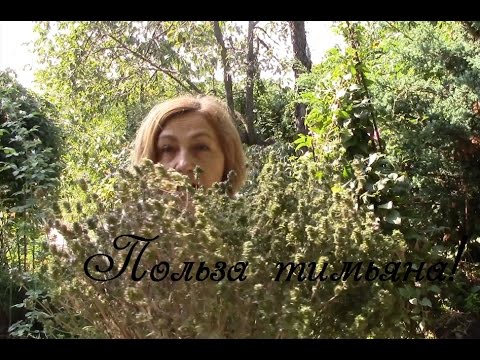

Watch this video on YouTube
Contraindications
Since the herb contains a large amount of thymol, it cannot be used for heart and kidney failure, stomach and duodenal ulcers, especially in the stage of exacerbation of the disease. During pregnancy, this herb is also contraindicated because it can cause the uterus to contract. With prolonged use of thyme preparations or with an overdose, the likelihood of developing hyperthyroidism (Graves' disease) is high. These drugs should not be used to treat children under the age of two.

